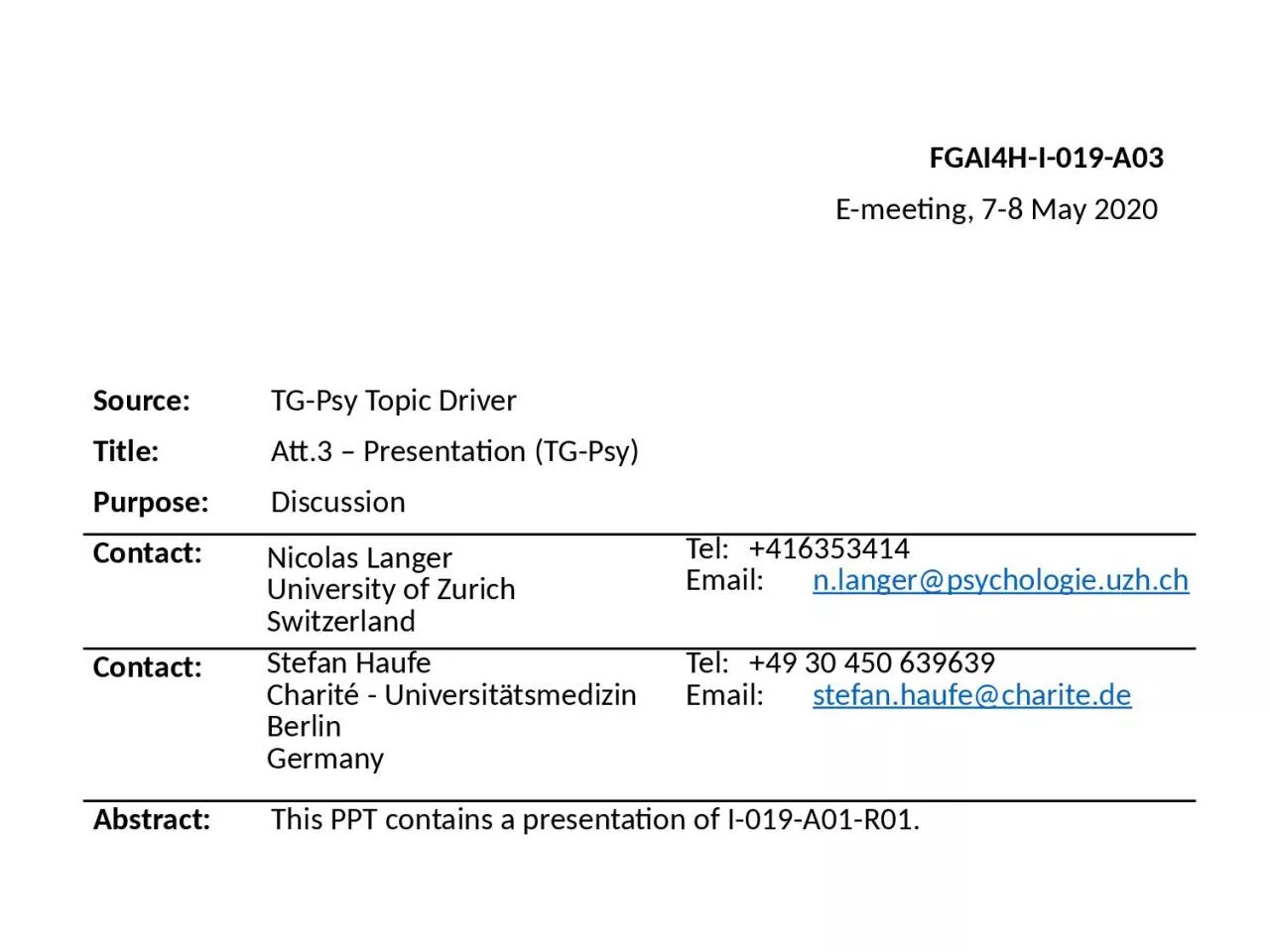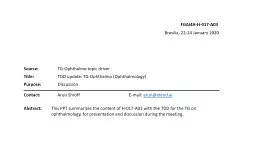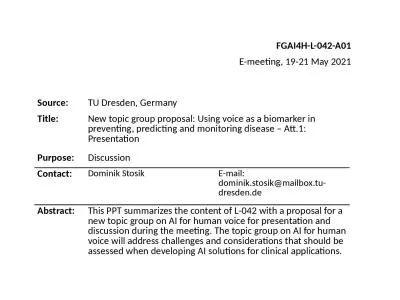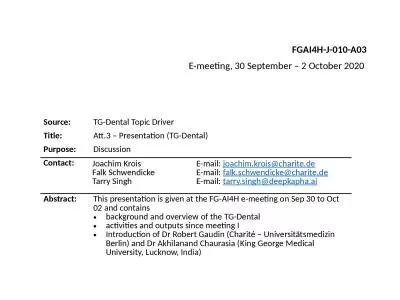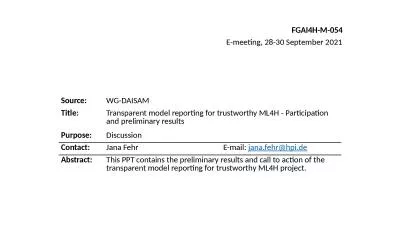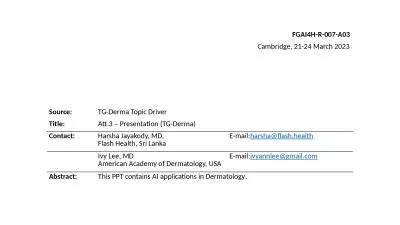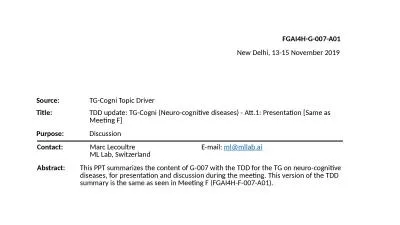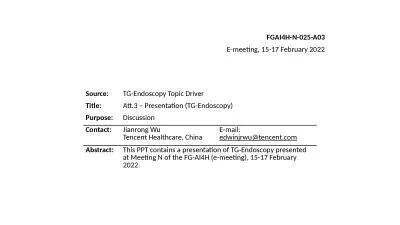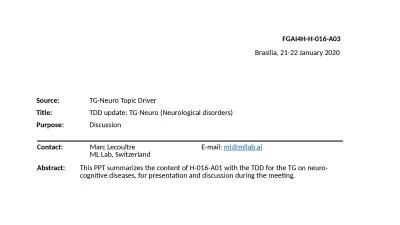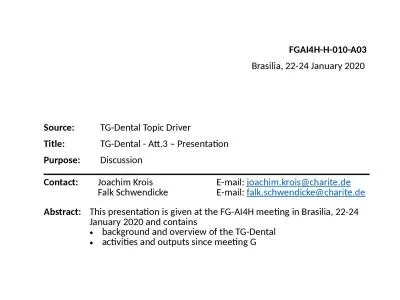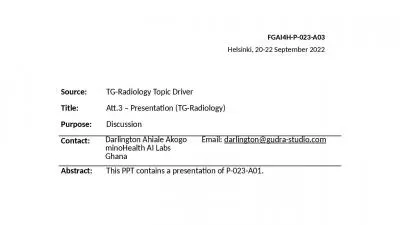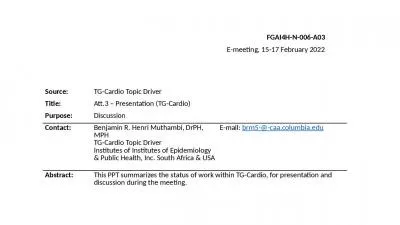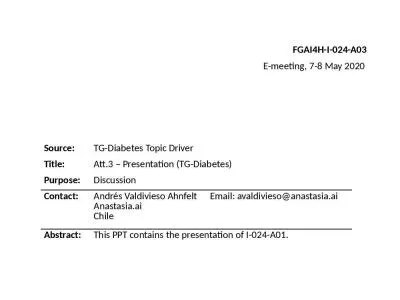PPT-FGAI4H-I-019-A03 E-meeting, 7-8 May 2020
Author : martin | Published Date : 2023-07-08
Source TG Psy Topic Driver Title Att3 Presentation TG Psy Purpose Discussion Contact Nicolas Langer University of Zurich Switzerland Tel 416353414 Email nlangerpsychologieuzhch
Presentation Embed Code
Download Presentation
Download Presentation The PPT/PDF document "FGAI4H-I-019-A03 E-meeting, 7-8 May 2020" is the property of its rightful owner. Permission is granted to download and print the materials on this website for personal, non-commercial use only, and to display it on your personal computer provided you do not modify the materials and that you retain all copyright notices contained in the materials. By downloading content from our website, you accept the terms of this agreement.
FGAI4H-I-019-A03 E-meeting, 7-8 May 2020: Transcript
Download Rules Of Document
"FGAI4H-I-019-A03 E-meeting, 7-8 May 2020"The content belongs to its owner. You may download and print it for personal use, without modification, and keep all copyright notices. By downloading, you agree to these terms.
Related Documents

